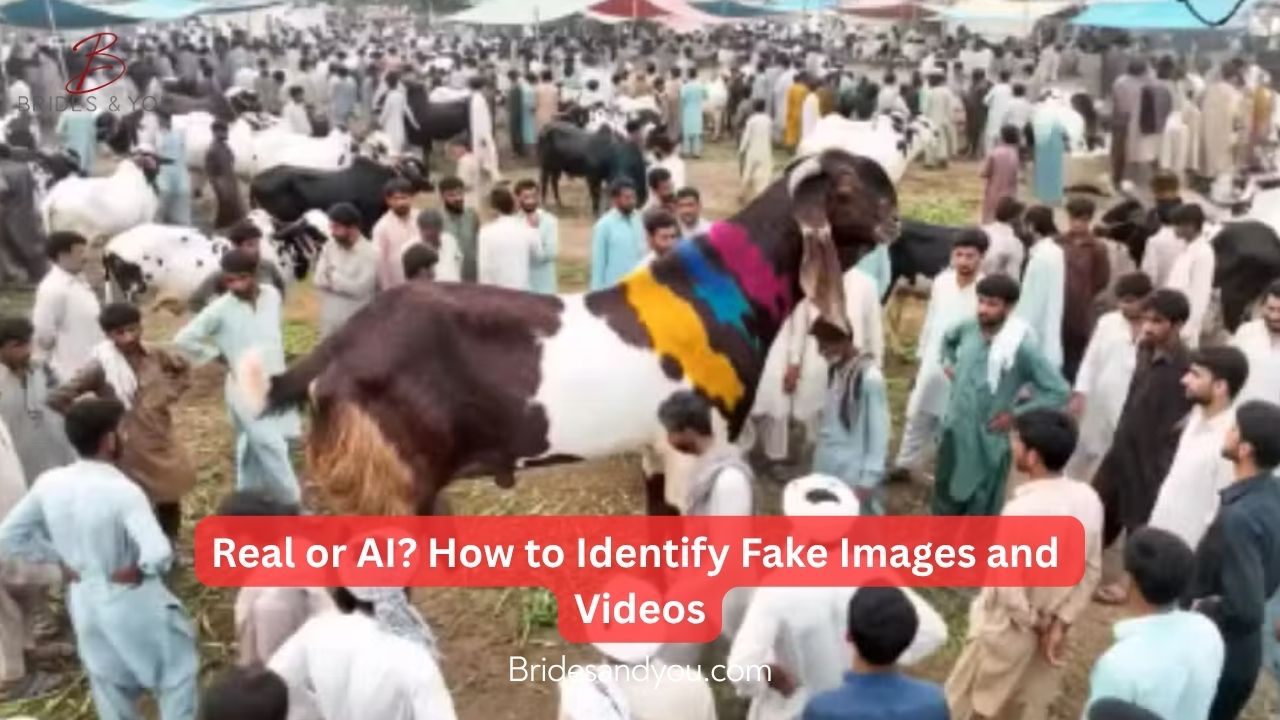Now Reading: Real vs Fake: How to Spot AI-Generated Images and Videos in the Digital Age
-
01
Real vs Fake: How to Spot AI-Generated Images and Videos in the Digital Age
Real vs Fake: How to Spot AI-Generated Images and Videos in the Digital Age

With the rise of AI-driven creative tools like Google Veo 3, it’s becoming increasingly difficult to distinguish between what’s real and what’s artificially created. From viral TikTok videos to shocking news images, AI-generated visuals are everywhere. While this technology opens new creative doors, it also fuels the spread of misinformation—especially in countries like Pakistan, where fake videos like oversized Eid goats at cattle markets have recently gone viral.
If you’ve ever wondered how to spot AI-generated images and videos, you’re not alone. This guide will help you stay one step ahead and avoid falling for fake content online.
1. Check the Original Source First
When you come across an unbelievable video or photo, pause before you share. Ask yourself: where did it come from?
Always:
- Verify whether it’s posted by a reputable media outlet or a trusted public figure.
- Be cautious of viral content coming from new or unverified accounts on platforms like X (formerly Twitter), TikTok, or Instagram.
- Search for the same image or video on established news websites. If no mainstream source has reported on it, that’s a red flag.
In Pakistan, for instance, manipulated images often spread on lesser-known Facebook pages before making their way to larger audiences. Sticking to trusted sources can help you avoid being misled.
2. Assess the Context Behind the Visual
AI-generated content is often shared without proper context—or any context at all. Ask these key questions:
- Who took the photo or recorded the video?
- When and where was it captured?
- Why is it being shared now?
Lack of background information is a strong indicator that the content might not be genuine. You can often find the truth by:
- Searching keywords related to the scene or event.
- Looking for press releases or government statements.
- Using platforms like Snopes or AFP Fact Check for verification.
3. Analyze Visual Details Carefully
No matter how realistic an AI-generated image may appear, small mistakes often give it away. When in doubt, zoom in and examine the details. Look out for:
- Unnatural lighting or misaligned shadows
- Blurry or distorted hands, teeth, or ears
- Glitches in movement or inconsistent facial expressions in videos
- Inaccurate reflections or unnatural skin textures
AI tools, though advanced, still struggle with details that our brains naturally notice. In particular, look at the eyes and fingers—two areas where AI frequently fails.
4. Use Reverse Image & Video Search Tools
When something looks off, use technology to fight back. Here are tools to help:
- Google Reverse Image Search: Upload or paste the image URL to see if it’s been used elsewhere.
- TinEye: Great for tracking older versions of photos.
- InVID: A video verification tool used by journalists to check video authenticity frame by frame.
If a supposed “new” image appears in posts from years ago—or shows up with different descriptions—it’s most likely repurposed or fake.
5. Check for Watermarks and Metadata Clues
Many AI generation tools like DALL·E, Midjourney, or Runway leave behind traces—either in the form of visible watermarks or hidden metadata.
While these can be intentionally removed, spotting them can help you identify fake content faster. Use tools like:
- ExifTool (for metadata extraction)
- Photo Forensics (to detect editing layers)
In many AI-generated visuals, the metadata will reveal file origins or editing history.
6. Trust Your Gut, but Always Verify
Sometimes your instincts are spot-on. If something looks too perfect, too dramatic, or just plain weird, trust that feeling—but back it up with facts.
Before you like, share, or comment, do a quick cross-check. One share can spread misinformation to hundreds or thousands. Being responsible with content can help reduce the spread of false information.
7. Stay Updated with Reliable Resources
AI technology is evolving at lightning speed. What’s convincing today may be even more deceptive tomorrow. Protect yourself by:
- Following digital literacy blogs and cybersecurity experts
- Subscribing to newsletters from fact-checking websites like PolitiFact, FactCheck.org, and BoomLive
- Attending online webinars or free courses on media literacy
In Pakistan and globally, governments and journalists are now focusing on educating the public to spot and report fake content.
Final Thoughts
The line between real and fake online is blurrier than ever. But by staying informed, questioning content, and using the right tools, you can avoid falling victim to AI-generated deception.
Remember, it’s not just about how to spot AI-generated images and videos—it’s about creating a more truthful and trustworthy digital world.











